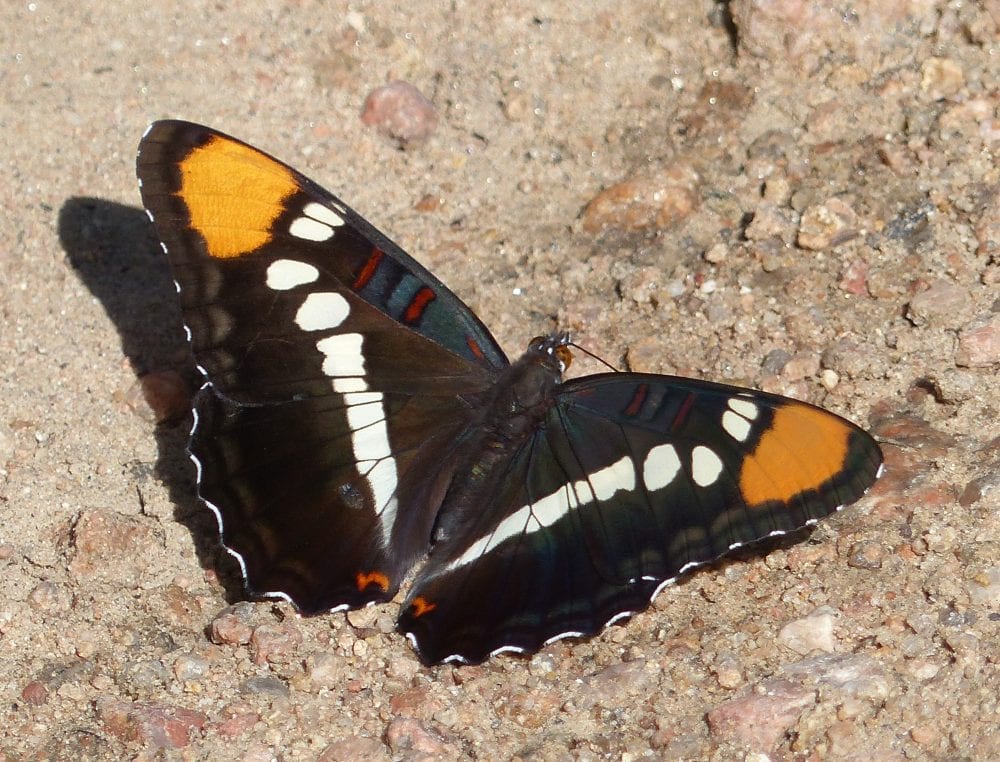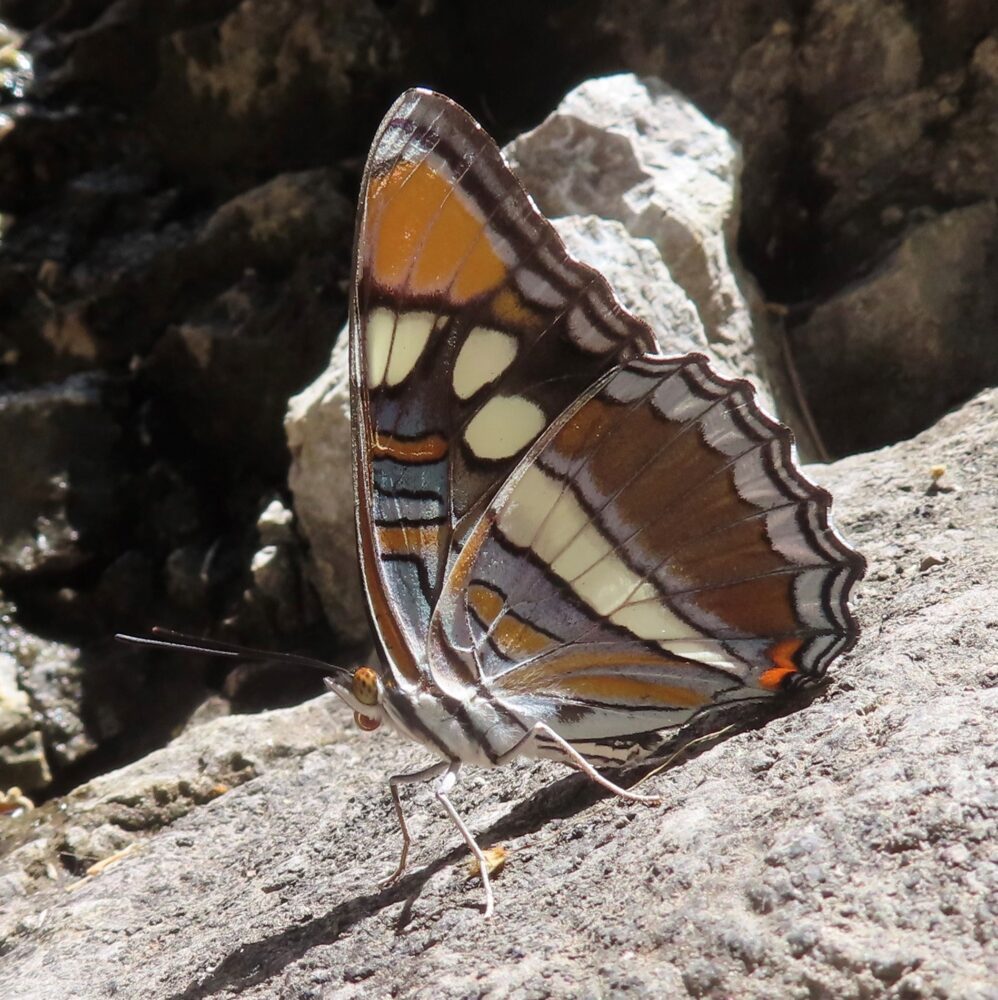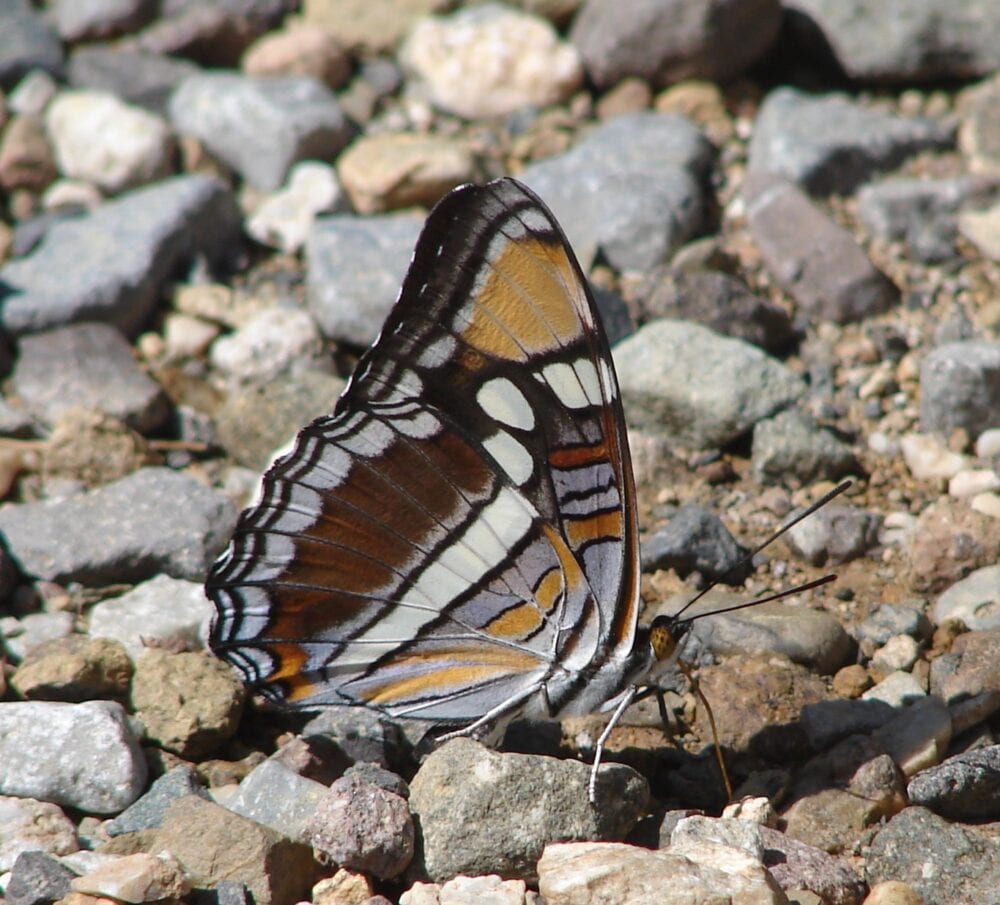by Steven J. Cary and Michael E. Toliver
The Brushfoots (Nymphalidae). This family is our second richest in terms of number of species and perhaps the most variable in terms of sizes, colors, patterns and behaviors. Despite the obvious differences in wing morphology, almost all members share a unifying structural character: on adults, the forelegs are reduced to tiny, brush-like structures, leaving only four functional legs. The exception that proves the rule is female Libytheinae, which have functional forelegs, emphasizing their ancestral status. Many of our most familiar butterflies are members of this family. Pursuant to Pelham’s (2023) catalog, we have ~100 species in ten subfamilies distributed as shown below. Other works may arrange, lump, or divide families in other ways. Updated June 26, 2023
Admirals and Sisters (Nymphalidae: Limenitidinae). Our four species in this subfamily are large, brightly colored and easily recognized in their native habitats. Adults of some species are mimics of distasteful butterflies in other families. Their larvae are camouflage artists.
- Viceroy (Limenitis archippus) obsoleta
- Red-Spotted Admiral (Limenitis arthemis arizonensis)
- Weidemeyer’s Admiral (Limenitis weidemeyerii) Limenitis weidemeyerii angustifascia, siennafascia
- Weidechippus hybrid (Limenitis archippus x L. weidemeyerii
- Arizona Sister (Adelpha eulalia) California Sister, Adelpha bredowii
Limenitis archippus (Cramer 1775) Viceroy (updated July 31, 2023)
Description. In its varied manifestations around North America, the Viceroy’s local appearance mimics that of Monarchs or the relevant Queen subspecies. In general, Limenitis archippus is orange with black veins and white-dotted black marginal bands. Viceroys have a single row of those white dots, while Monarchs and Queens have a double row. A postmedian black line on the hindwing also distinguishes it from Monarchs and Queens. Also note the diagonal black line originating at the leading edge of the forewing, proceeding through the cell-end white spots and connecting to the forewing margin near the anal angle. Range and Habitat. The Viceroy is familiar, mid-level royalty in most of temperate North America but for the West Coast. It lives in the semi-arid southwest US, including New Mexico, but its reliance on willows limits it to riparian habitats below 7000′ (counties: Be,Co,Cu,DB,DA,Ed,Gr,Gu,Ha,Hi,Lu,MK,Mo,RA,Sv,SJ,SM,SF,Si,So,Ta,To,Un,Va). Life History. Willows (Salix species) and cottonwoods (Populus species) (both Salicaceae) are the primary larval hosts in our area. Nominate Limenitis archippus archippus seems to prefer the shrubby coyote willow (Salix exigua), but subspecies Limenitis archippus obsoleta seems to prefer the larger tree, Goodding’s willow (Salix gooddingii). Larvae mimic bird droppings. Half-grown larvae overwinter. Flight. Behaviorally, Viceroys employ a “flap, glide” flight typical of many Nymphalids, unlike the soaring flight of Monarchs and Queens. Viceroys have two overlapping generations per year in northern New Mexico, from May 17 to September 18, peaking June and July. Southern New Mexico has a spring brood in May-June and a summer brood in August-September. Overall, our records span April 10 to November 30. Males patrol riverbanks and edges of willow stands, sometimes perching high in trees. Adults nectar at nearby flowers. Comments. Northern New Mexico has the orange, Monarch-mimicking, nominate version typical of eastern North America. Legendary Lepidopterist Ken Davenport was the first to document this form in New Mexico while attending high school in Santa Fe in 1964. Southern New Mexico supports the Desert Viceroy, Limenitis archippus obsoleta (W. H. Edwards 1882), which mimics the southwestern subspecies of the Queen: Danaus gilippus thersippus. This form is mahogany in color; the hindwing submarginal black line and forewing diagonal black line are weakly expressed and bordered with white spots. These two subspecies of Viceroy intermix and interbreed in the Middle Rio Grande bosque between Albuquerque and Socorro, producing a variety of intermediate forms.
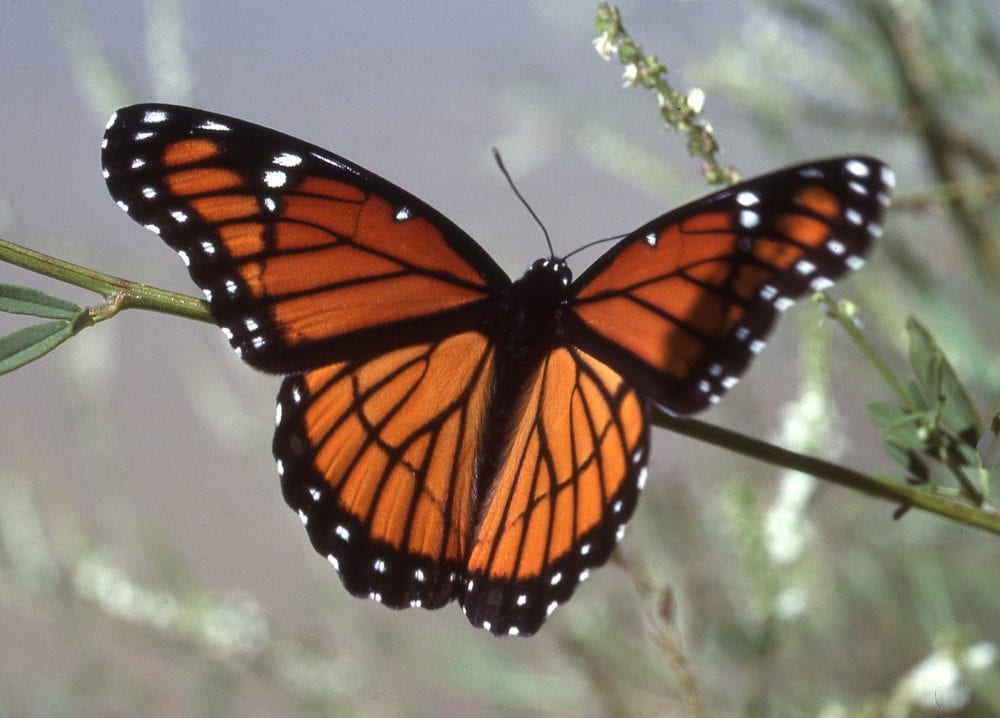
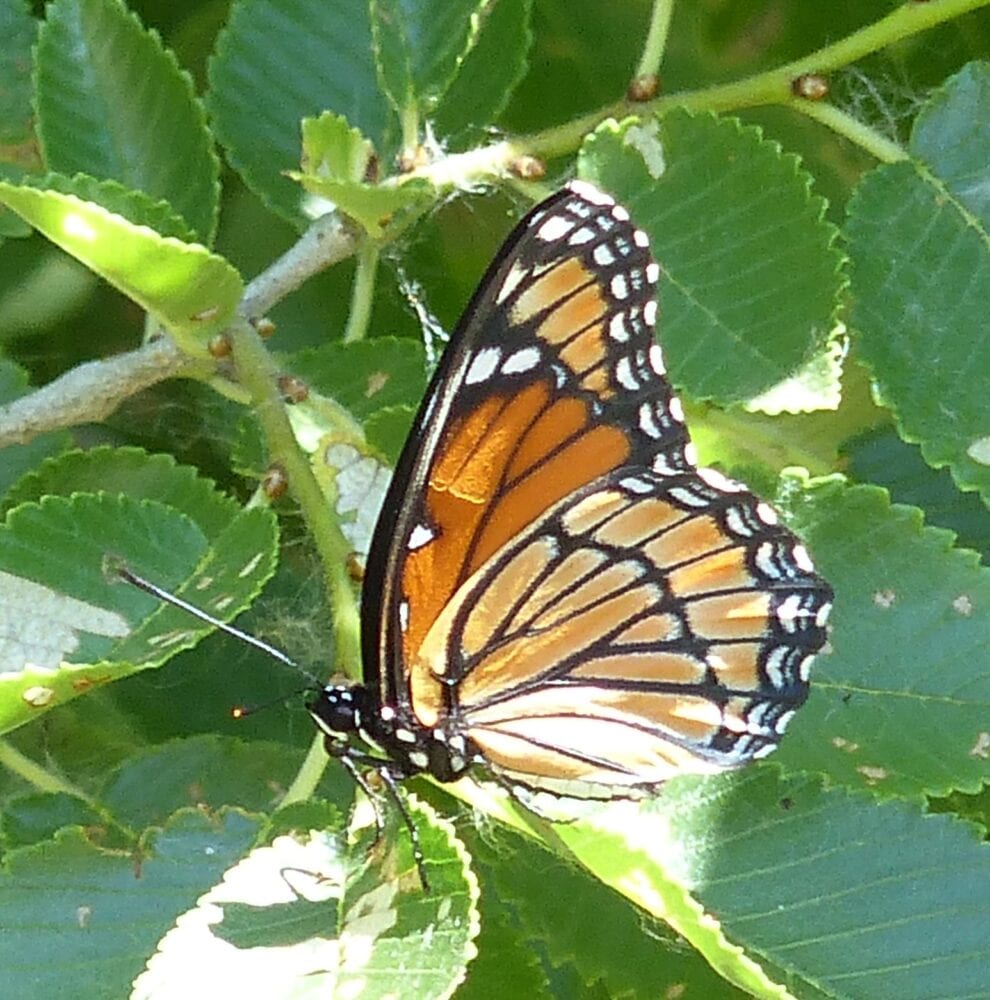
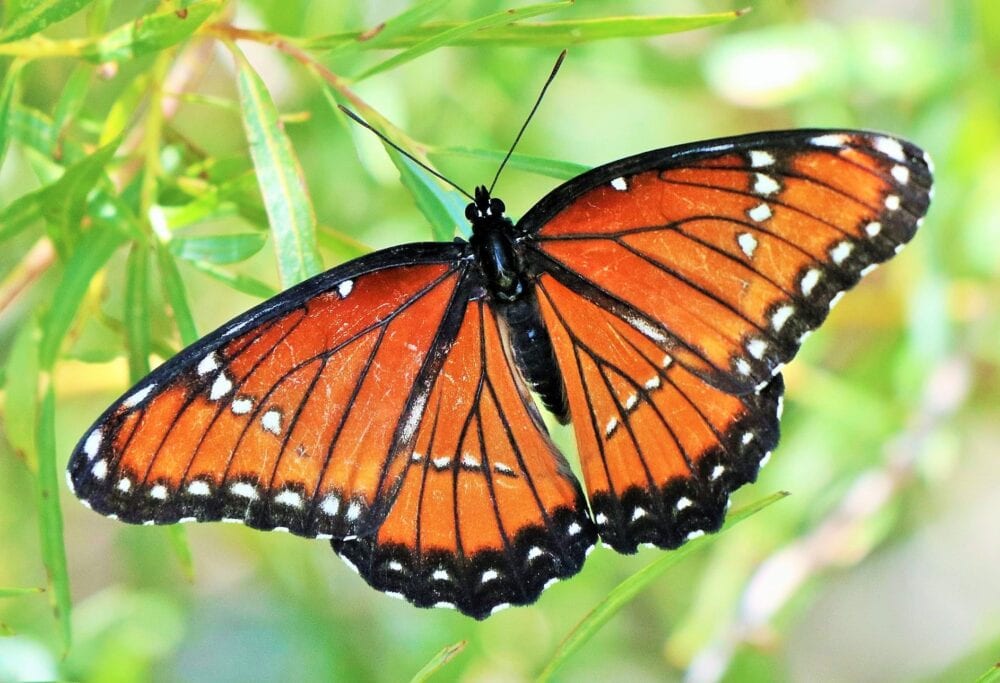
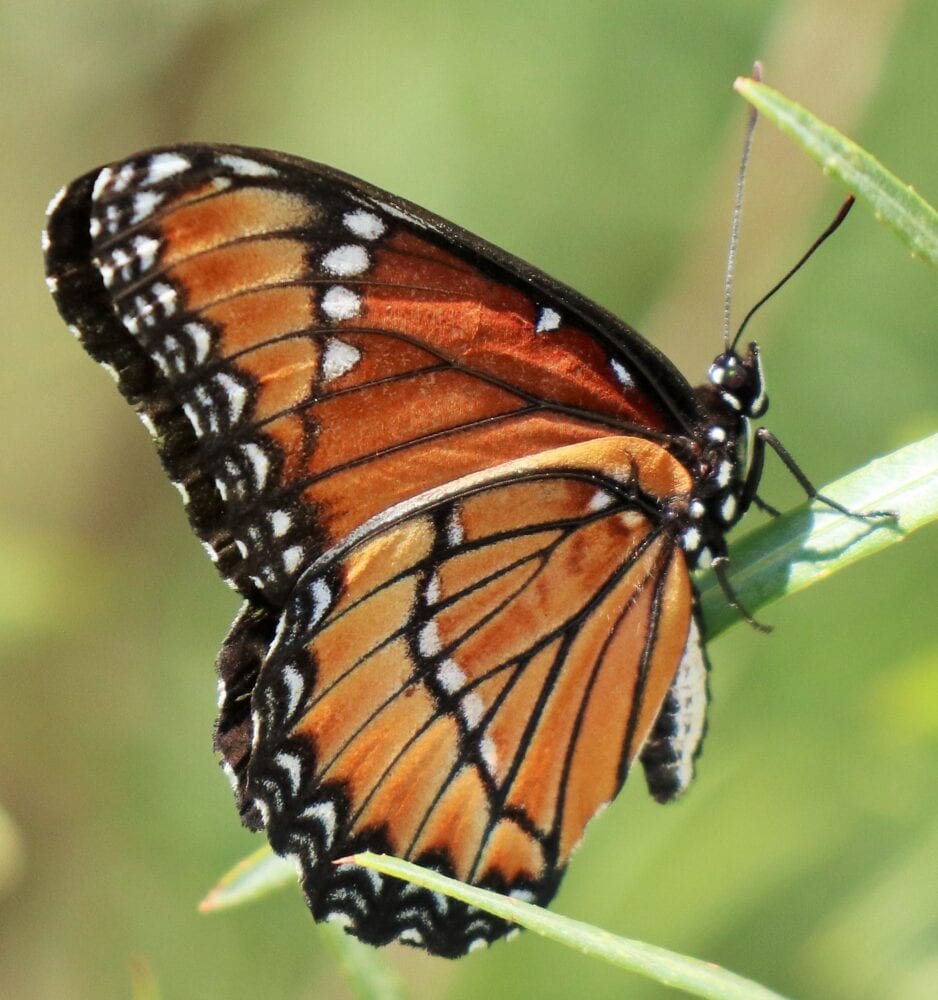
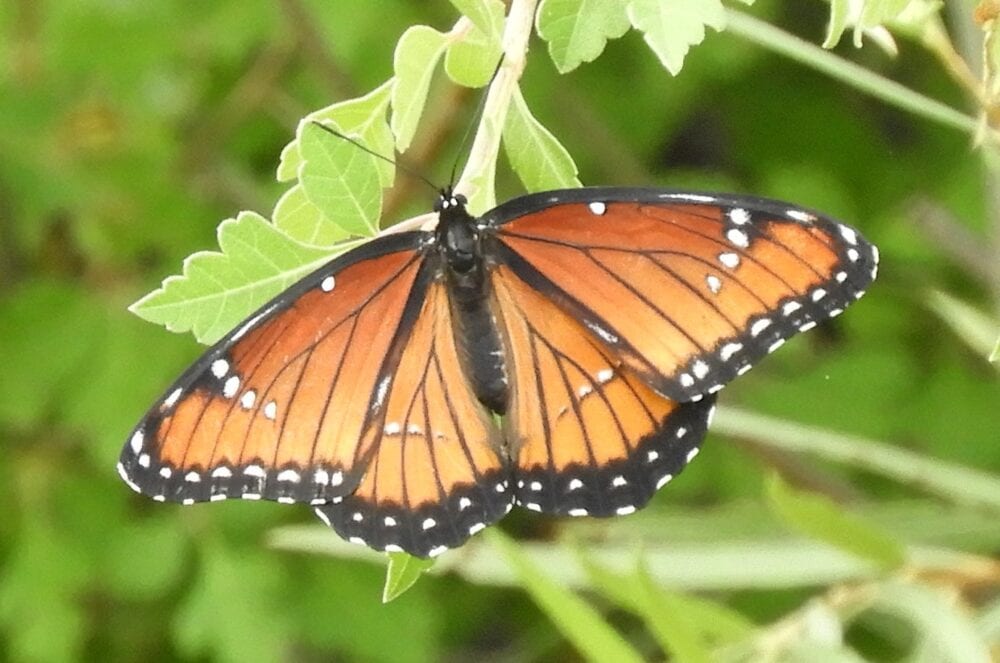

Limenitis arthemis (Drury 1773) Red-Spotted Admiral (updated June 29, 2024)
Description. Beautiful Red-Spotted Admiral (also called Red-spotted Purple) mimics bad-tasting Pipevine Swallowtail, which makes it a visually prominent part of the southern New Mexico butterfly fauna. It is velvety black above grading to iridescent blue on the outer wing surfaces. Undersides are dark purple with bold orange spots. Range and Habitat. The species we call Limenitis arthemis is known from boreal Canada and the northeastern US, where it has a white band like that of Limenitis weidemeyerii (below) and is called the White Admiral. The southeastern US has subspecies Limenitis arthemis astyanax, which lacks the white bands. Unbanded populations also thrive in the southwestern US and northern Mexico as subspecies Limenitis arthemis arizonensis W. H. Edwards 1882. In New Mexico, look for ‘Arizona’ Red-Spotted Admirals in Upper Sonoran Zone riparian canyons (counties: Be,Ca,Ci,DA,Ed,Gr,Hi,Li,LA,Lu,Ot,SF,Si,So), usually 5000 to 8000′ elevation. Our three Limenitis species replace each other altitudinally in southern New Mexico, with Limenitis arthemis in the middle. Life History. Hosts for larvae are deciduous trees and shrubs in the genera Salix, Populus, Prunus and Quercus. Willows seem to be a key indicator for this species in New Mexico. Larvae hibernate half-grown. Flight. New Mexico adults fly from March 1(!) to November 10, suggesting two to three overlapping generations per year. Adults patrol along riparian canyons, perch on overhanging branches, and come to nectar. Comments. Sightings of an ‘Arizona’ Red-Spotted Admiral near Santa Fe in 2016, north of Ramah in 2021, near Los Alamos in 2024, and east of Albuquerque suggest this butterfly is expanding its range to the north. Hybrids with congeners are rare, but two New Mexico hybrids with Limenitis weidemeyerii are known (Li,Si), as is one with Limenitis archippus obsoleta (Hi).
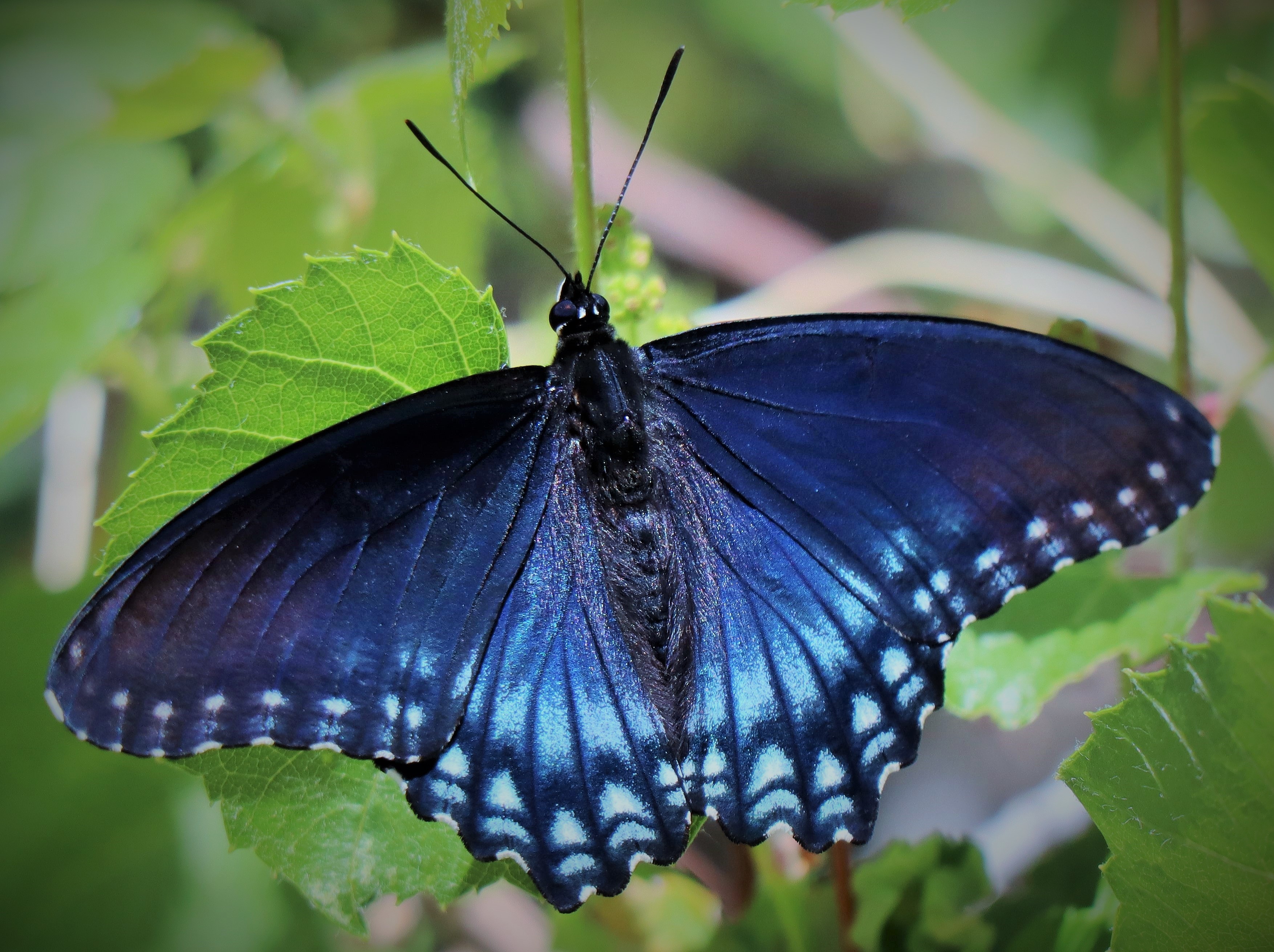
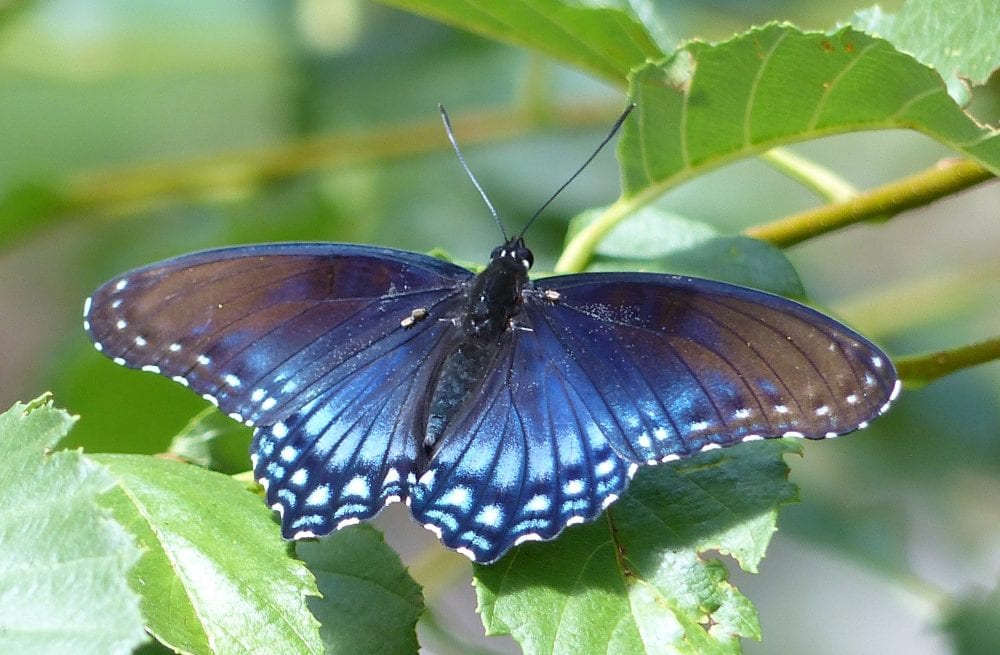
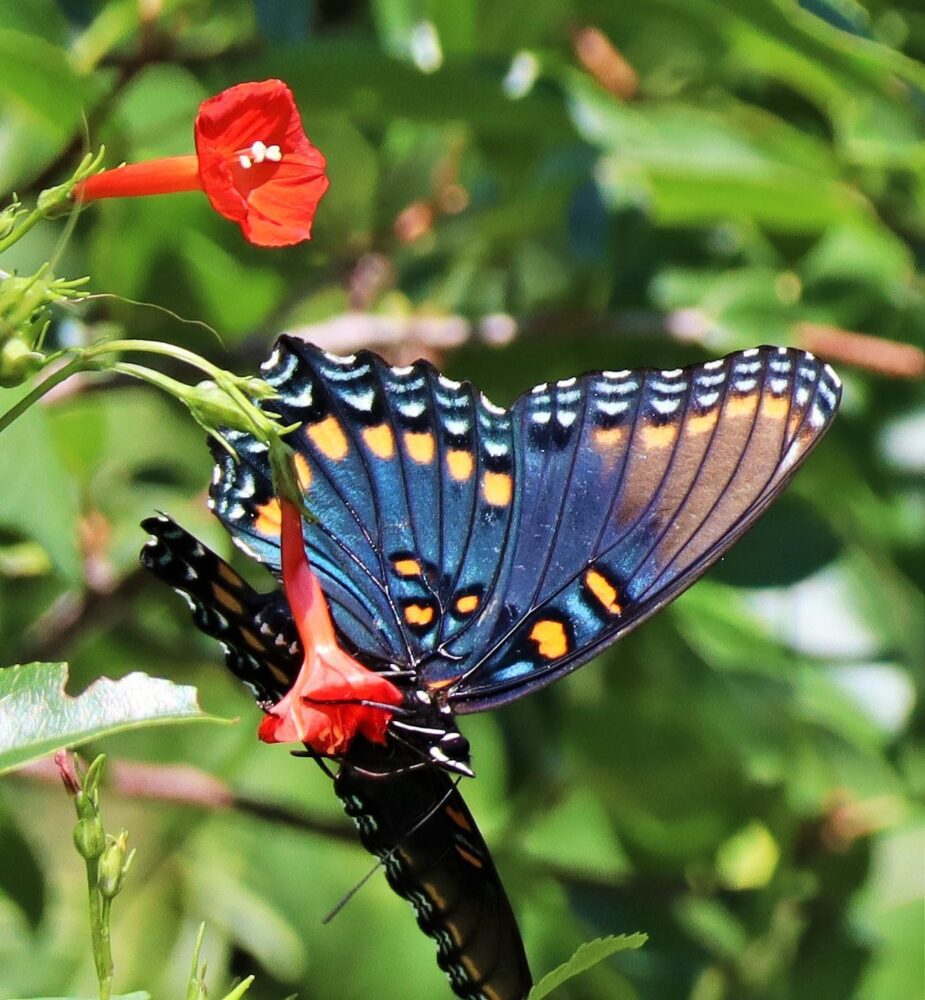
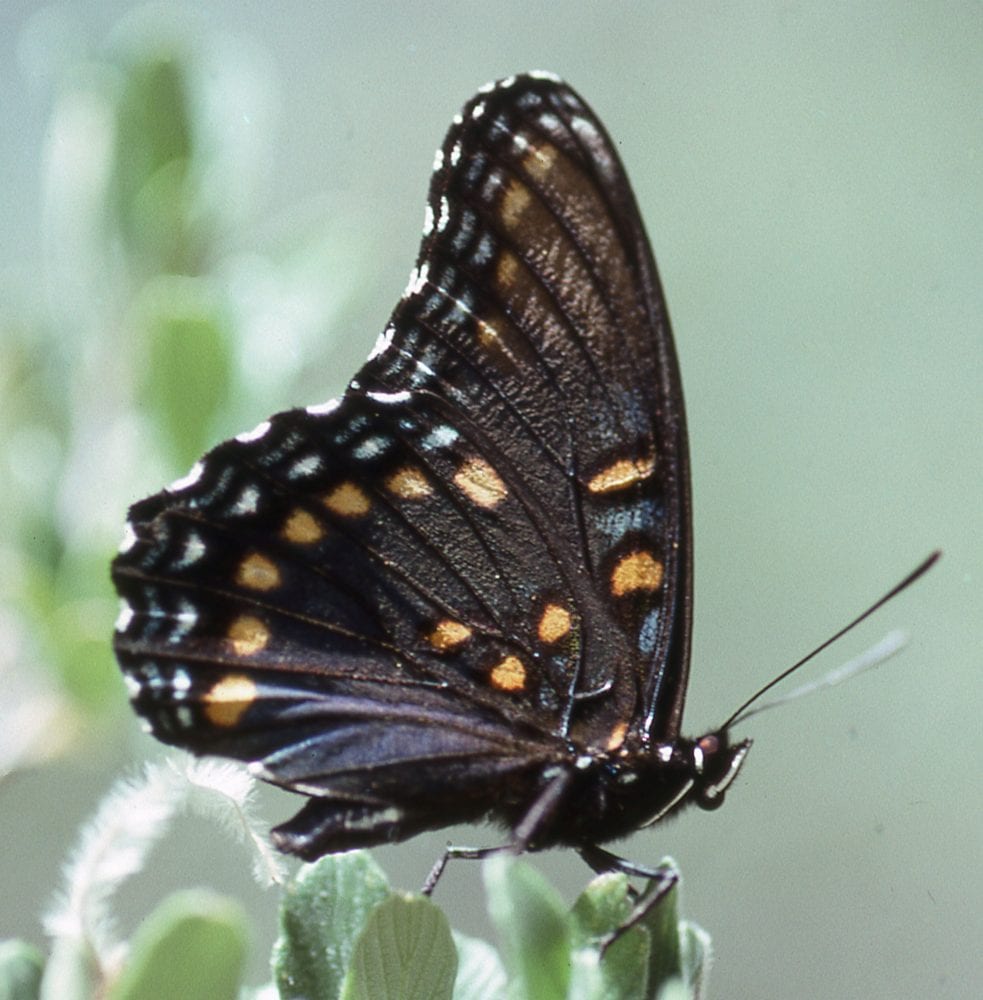
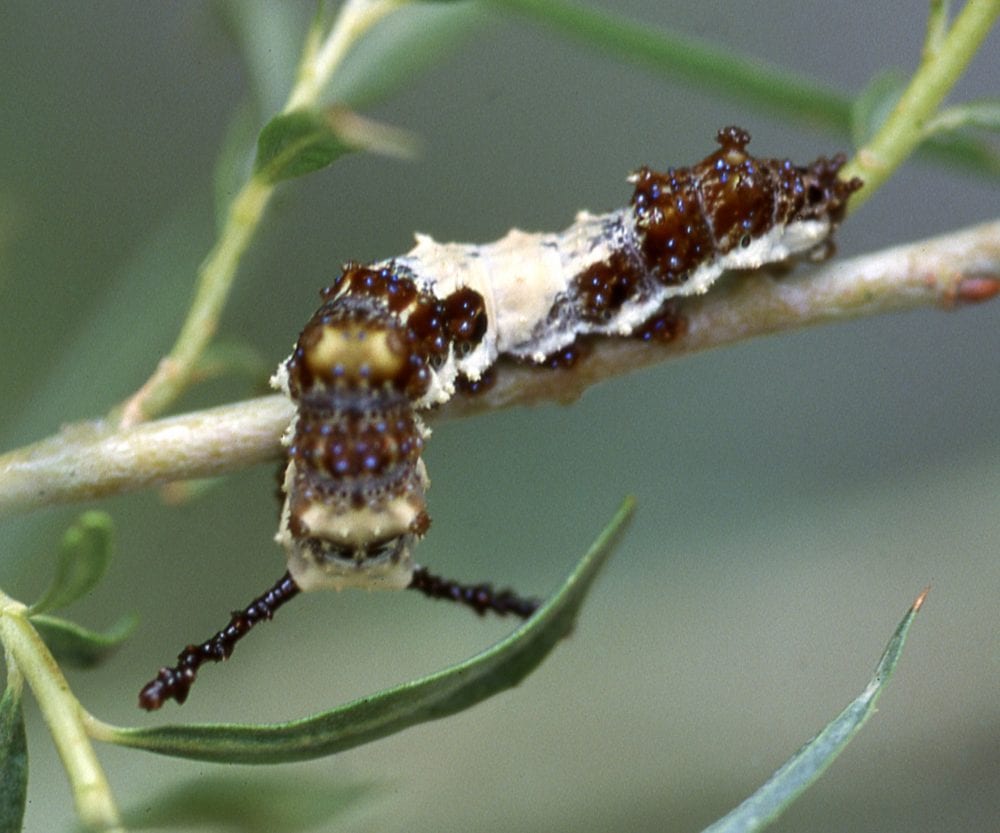

Limenitis weidemeyerii W. H. Edwards 1861 Weidemeyer’s Admiral (updated June 30, 2025)
Description. Weidemeyer’s Admiral is black above, with bold white bands crossing fore- and hindwings. This visually disruptive color pattern is repeated below, but masked by gray, white and rusty pastel accents. Range and Habitat. Essentially a Rocky Mountain species, Limenitis weidemeyerii is distributed from Alberta to AZ and NM and from NV to SD. In New Mexico it inhabits Transition and Canadian Zone watercourses in our major mountain ranges (counties: Be,Ca,Ch,Ci,Co,Gr,Li,LA,MK,Mo,Ot,RA,Sv,SJ,SM,SF,Si,So,Ta,Un,Va), generally 6500 to 11,000′ elevation. Life History. Hosts are willows (Salix) and aspen (Populus tremuloides; both Salicaceae) and some Rosaceae (Prunus, Amelanchier and Holodiscus species). Larvae roll leaves into shelters, rather like many skippers. Flight. Weidemeyer’s Admiral completes two overlapping summer generations in New Mexico. Adult observations fall between May 13 and October 13, peaking from June to August. Males perch on branches that overhang mountain streams, then patrol up- and down-stream looking for females, often returning to the same perch. Adults feed at nectar, moist earth and other tasty treats like campfire ashes and dung. Comments. The nominate subspecies prevails in northern and south-central New Mexico, including Sierra Blanca and the Sacramento Mountains (Li,Ot). It has relatively wide white bands. Southwest New Mexico has subspecies Limenitis weidemeyerii angustifascia (W. Barnes & McDunnough 1912), which has relatively narrow white bands and the underside is more heavily washed with white scales. Should weidemeyerii be found in mountains of the bootheel region of NM (Hi), it would likely be ssp. siennafascia Austin & Mullins 1984. This subspecies is similar to angustifascia, but has more red-brown color ventrally. Specimens from the San Mateo and Magdalena Mountains seem to be intergrades; some look like typical weidemeyerii, some like typical angustifascia and some are in between. Those are marked by open squares on the map. A rare hybrid with Limenitis archippus (making it a weidechippus) was photographed in El Rancho on July 27, 2021.
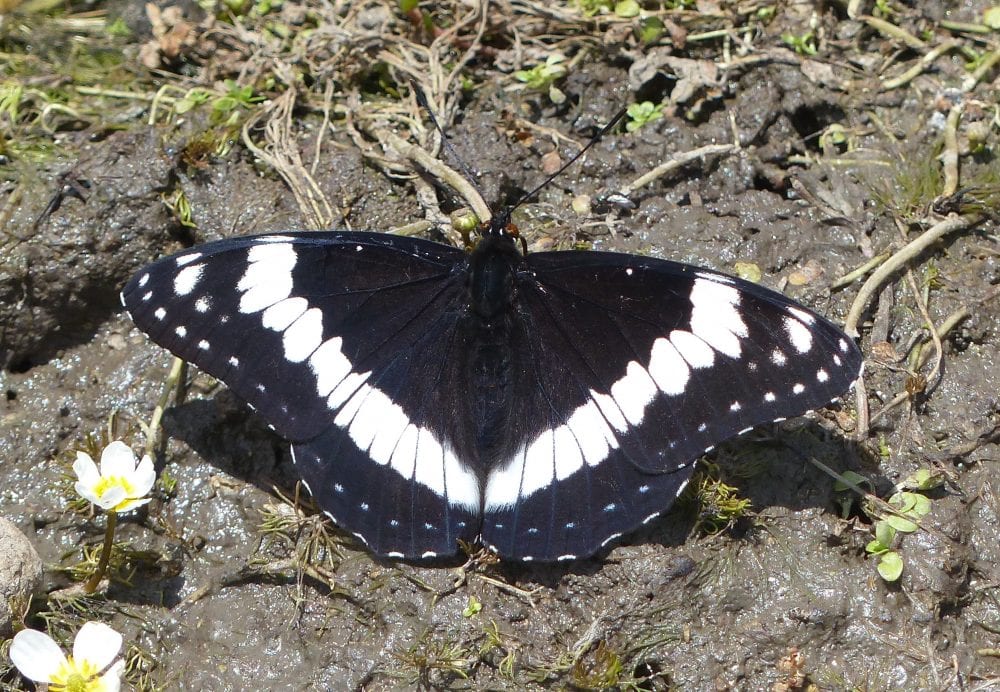
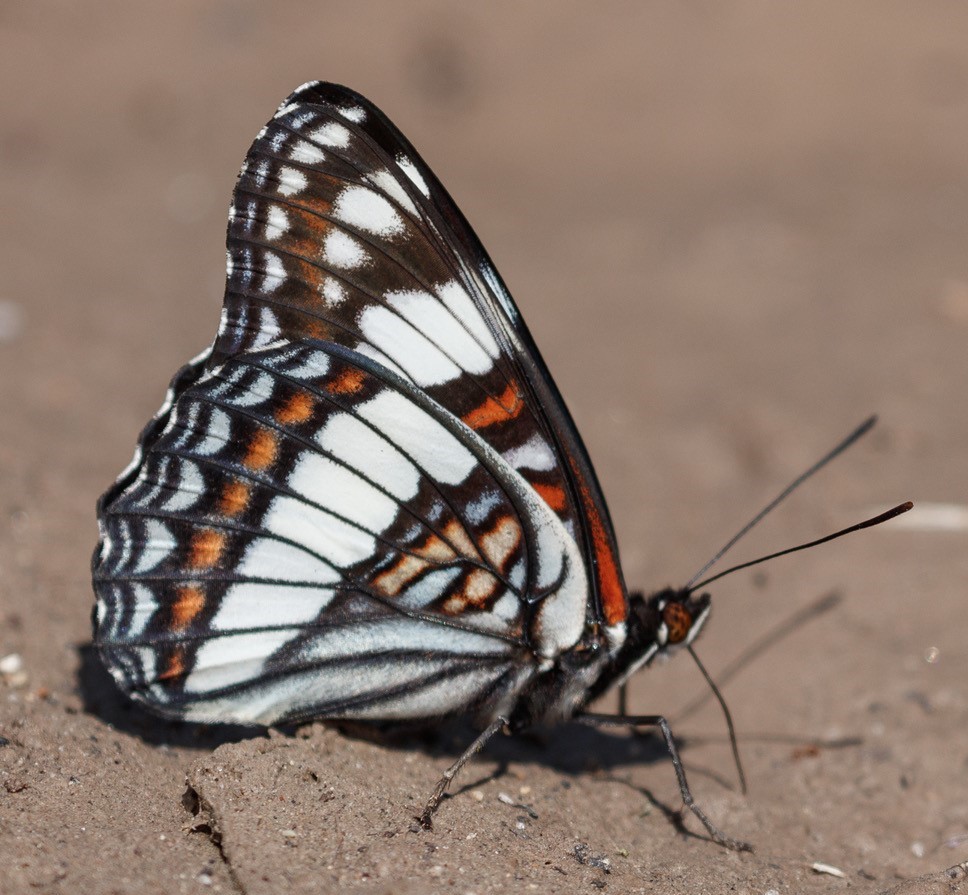
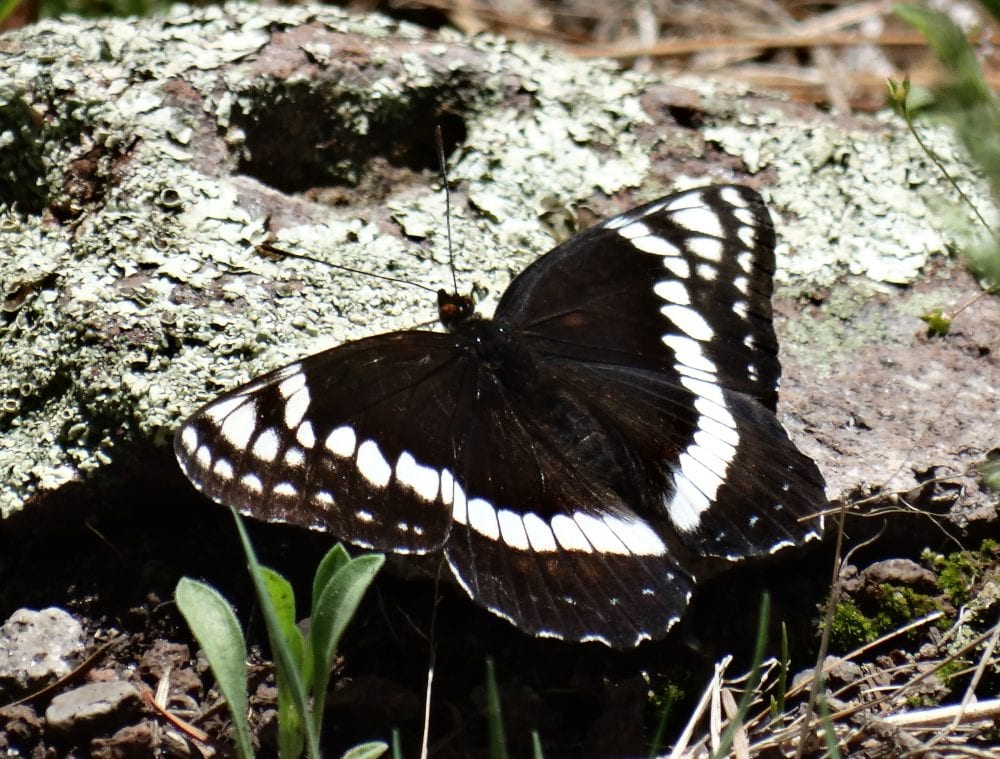
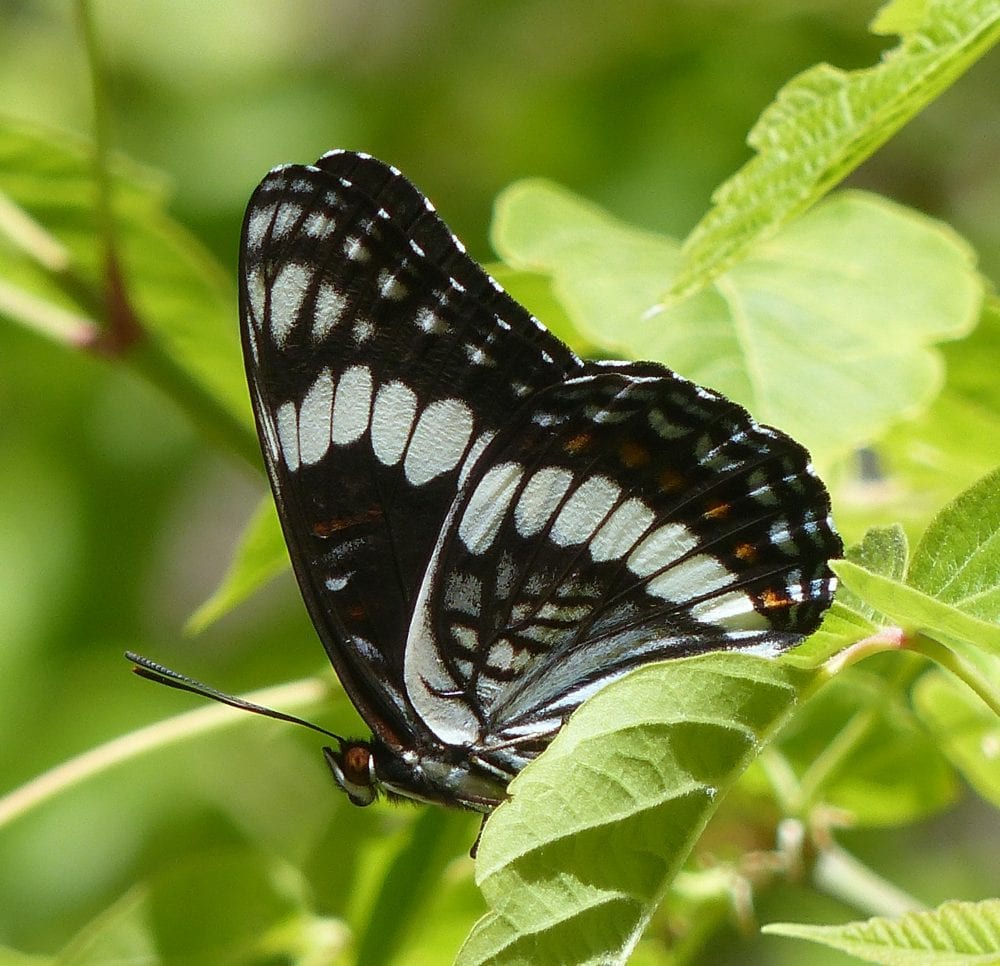
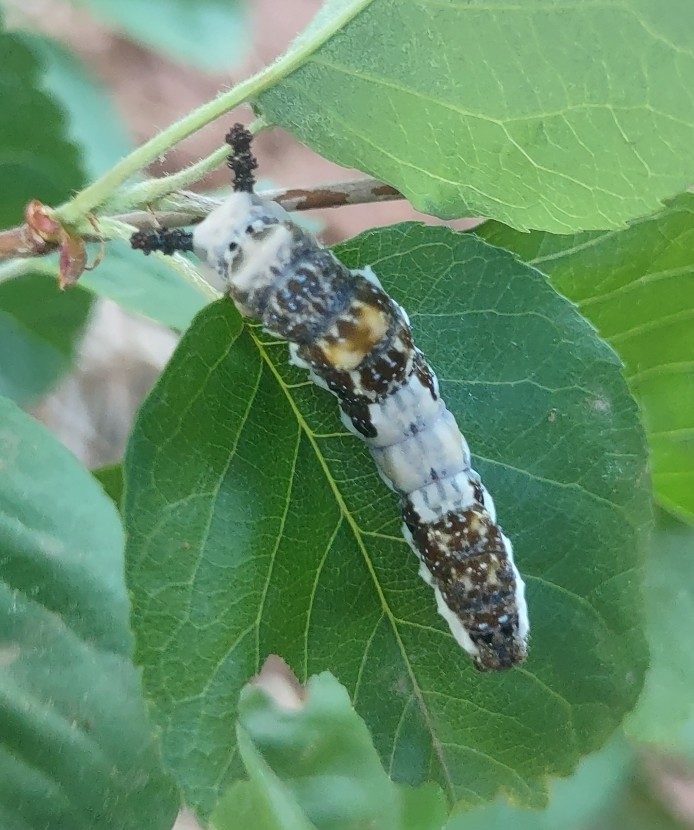
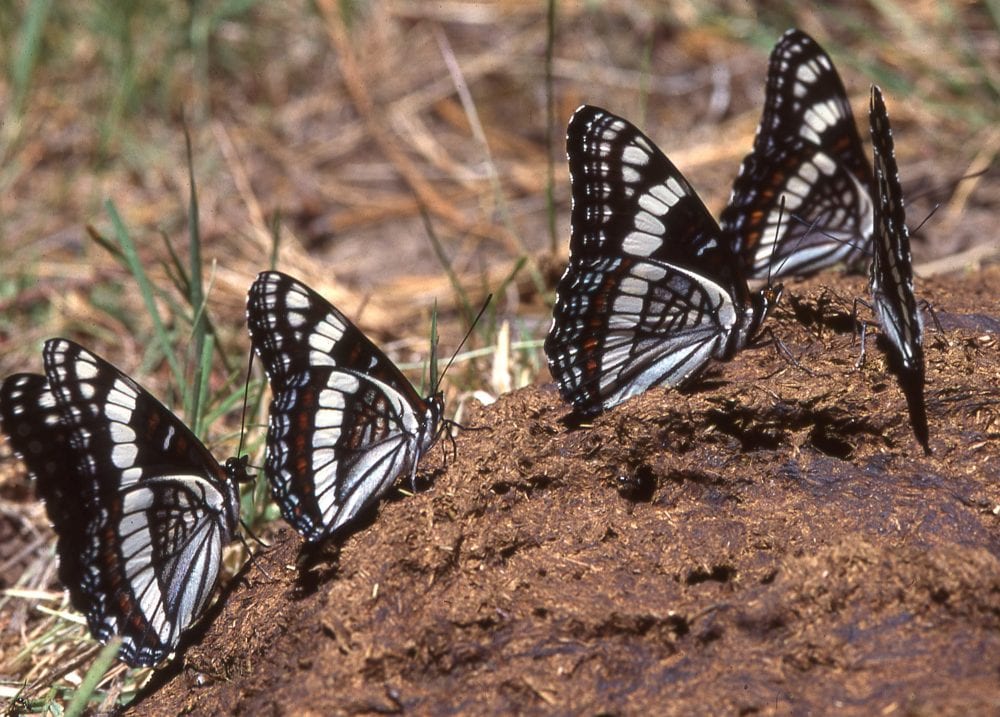

Limenitis archippus x Limenitis weidemeyerii Weidechippus Hybrid
A very rare hybrid between Viceroy (Limenitis archippus) and Weidemeyer’s Admiral (Limenitis weidemeyerii) was found in the Rio Grande Valley on July 27, 2021. It was seen in El Rancho, in northwestern Santa Fe County. It was posted to iNaturalist at the time and over the following three plus years it attracted a lot of comments of amazement. Apparently, it is a very rare hybrid.
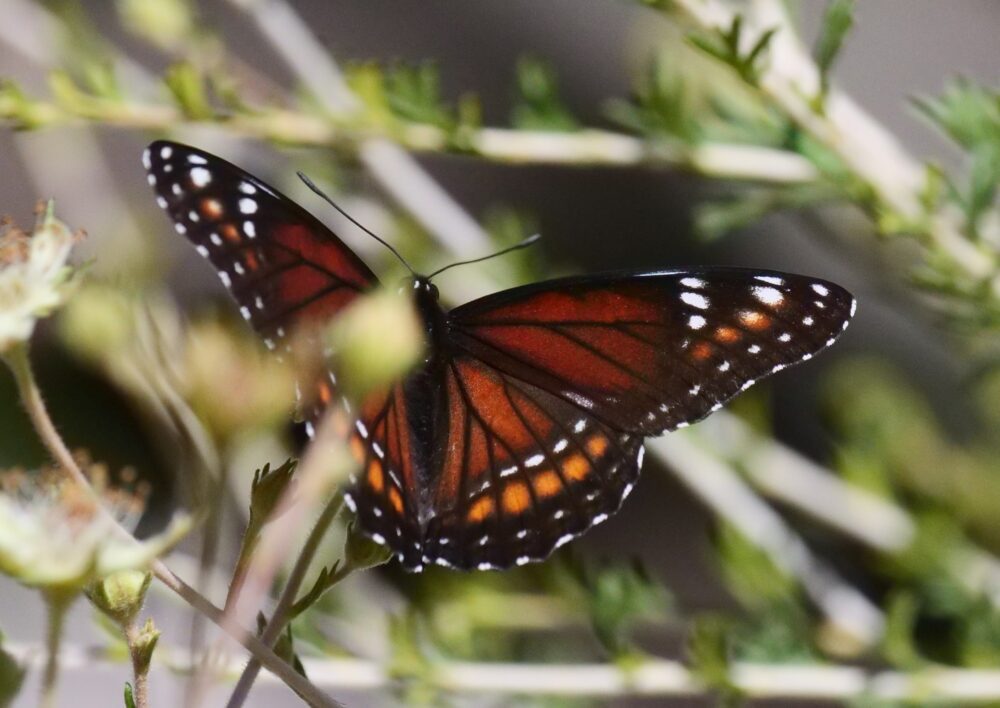
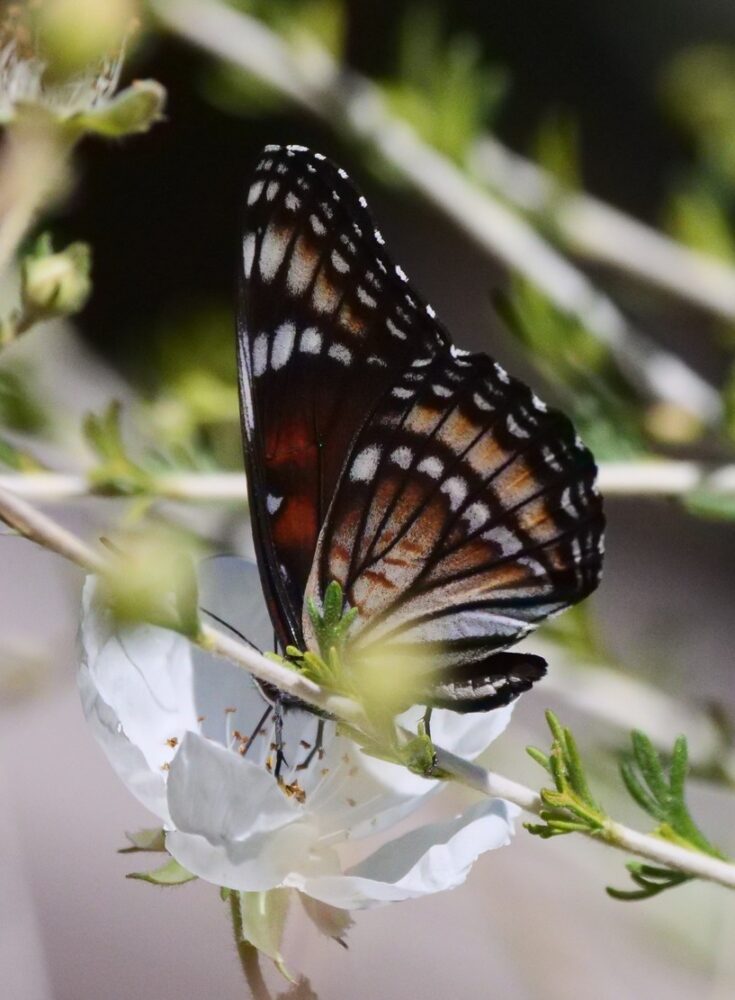
Adelpha eulalia (E. Doubleday [1848]) Arizona Sister (updated August 13, 2023)
Description. Adelpha eulalia is large and unforgettable. Against a dark background, a white stripe angles across the wings toward an apricot-colored triangular patch in the forewing apex. Undersides are beautifully brushed with pastel lavender, white and cantaloupe. Range and Habitat. Arizona Sisters live from the Mexican Sierra Madre north to the Sierra Nevada in California and the Rocky Mountains in Utah and Colorado. It inhabits oak woodlands in New Mexico (all counties but Cu,Gu,Ha,Le,Qu,Un), generally 5000 to 8500′ elevation. Life History. Oaks (Fagaceae) are the hosts. Larvae are content to eat Gambel’s oak (Quercus gambelii), Arizona oak (Quercus arizonica), Emory oak (Quercus emoryi) and probably others. Larvae overwinter. Flight. Northern New Mexico populations fly in two generations: June 7 to July 5, and July 24 to September 19. Southern New Mexico supports three overlapping generations between April 21 and November 11. Males patrol canyons with a characteristic flight – a few rapid wing flaps alternate with wings-out coasting – then perch head-down on exposed branches to watch for females. Adults come to wet sand, but rarely nectar. They are capable flyers and may wander out to our eastern plains, far from breeding areas. Comments. “I learn from Miss C. Ellis that this butterfly is common in the Sandia Mountains, N. M. This . . . extends its range about 200 miles northward in this region” (Cockerell 1901b). We used to call this butterfly the California Sister, Adelpha bredowii Geyer1837, which is now understood to be a distinct species which does not occur in the US (Pelham 2021).
